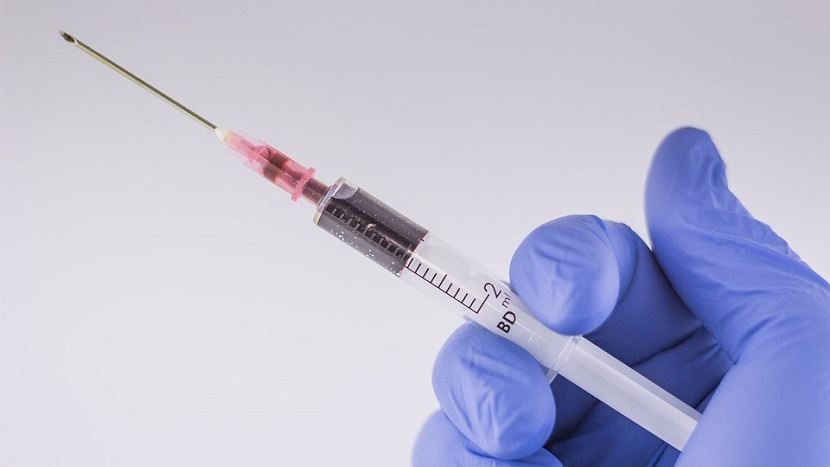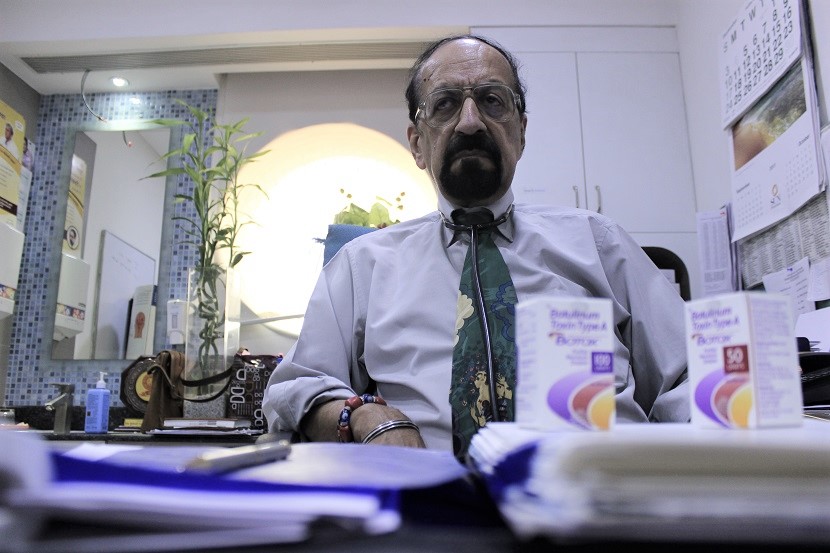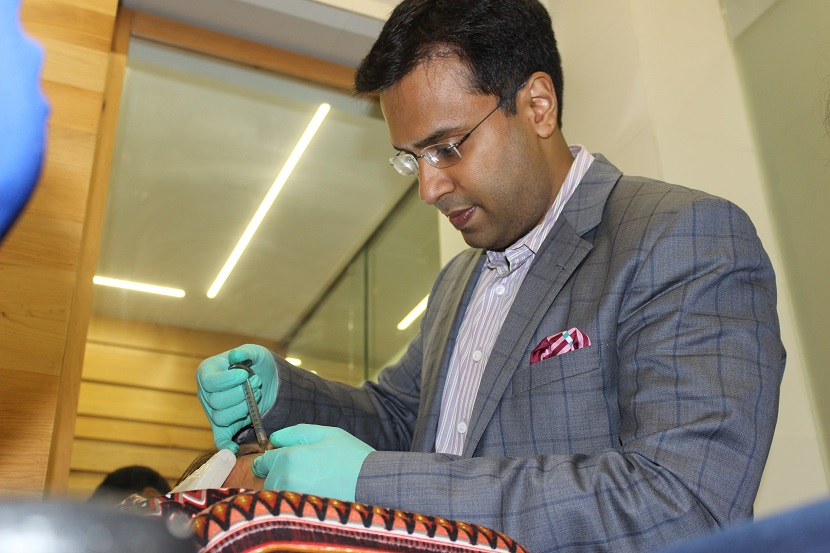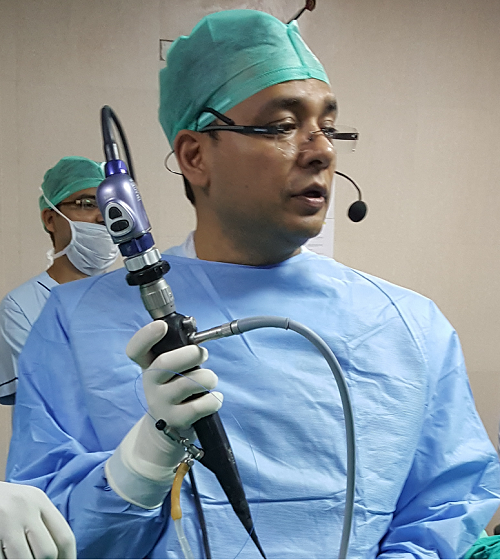
Image for representation purpose only
Kamal, a mechanical engineer, was hardly 29 when he suffered a brain stroke that paralyzed his left limbs. Kamal had lost all hopes of recovery when, one day, his doctor, Dr P N Renjen, told him about Botox treatment.
A shot of Botox-- botulinum toxin A-- each in his thigh and arm relaxed his stiff muscles. A few hours later, Kamal could straighten his arm. The flexibility he acquired made the physiotherapy he was already undergoing more effective.
Slowly, Kamal regained the lost strength and sensation in his leg and arm, which allowed him to do all his routine activities independently.
In the past couple of years Botox has emerged as a wonder drug that can treat a wide range of medical conditions such as muscle stiffness, migraines, depression , dystonia, writer’s clamp, excessive sweating, urinary incontinence.
For the uninitiated, Botulinum Toxin A is derived from a bacteria called Clostridium Botulinum. It is a toxin and can cause severe food poisoning and nerve damage if taken orally. But when injected in tiny quantities in the muscles, it relaxes them by blocking the communication between the nerves and muscles.
“Spasticity is a motor dysfunction that may occur post stroke, spinal cord injury, multiple sclerosis or traumatic brain injury,” says Dr Renjen, head, neurology at Indraprastha Apollo hospital.
 Dr P. N. Renjen uses botox to improve the movement of limbs in his post-stroke patients
Dr P. N. Renjen uses botox to improve the movement of limbs in his post-stroke patients
A study conducted on 107 patients undergoing treatment for limb spasticity at Apollo hospital, states that botox decreased the muscle tone and improved the range of motion, limb posture, function and pain. The study was also published in International Journal of Scientific Research.
Botox is given in the muscle spindle. It blocks the releases of neurotransmitter acetylcolin and relaxes the muscles. While botox helps treat multiple sclerosis, traumatic brain injuries, cervical cord injuries and conditions where patient’s mobility is reduced due to stiffness, it does not actually improve the muscle power.
The use of botox , in fact, goes back to the 1970s. It was originally the side-effect of the drug in use that made it so popular.
Dr Alan B. Scott, an American ophthalmologist was experimenting with botulinum toxin, trying to treat people with strabismus or crossed eye (a condition in which the eyes do not properly align with each other when looking at an object) , when he noticed that the toxin when injected around the eye muscle also removed the wrinkles surrounding the eye.
In 1978, Scott named the drug Oculinum and also formed a company by the same name. In 1980, pharma giant Allergan bought his company and named the drug botox. Initially, botox was used by ophthalmologists only to treat people with crossed-eyes.
Dr Madhuri Behari, a noted Delhi-based neurologist has been using botox since 1999. At that time, it was not available in India, so Behari, who was then working with All Institute of Medical Sciences(AIIMS), took the approval of the ethics committee at AIIMS and asked the company to send two vials of botox containing 5000 units. “Two representatives from the company brought them from the UK. Initially we used it on patients with blepharospasm and hemifacial spasm, later as we gained experience and training, we used it in other conditions as well,” she says.
Those days, says Behari, she used to take a video as well as a signed consent from the patients before injecting the botox. The patients then would come after two weeks of taking injection so that she could document the effects and side-effects of the drug. “This methodical recording of data allowed us to write our experience in medical scientific journals. And subsequent to the US FDA approval, Drug Controller General Authority in India too approved its use,” says Behari.
Botox changed the way doctors had been treating various diseases. “I have given it in patients who have drooling, excessive saliva flowing out of mouth seen in ALS and Parkinsonism, and seen remarkable improvement,” says Behari.
Behari cites an interesting case of an auto rickshaw driver, who was suffering from hemifacial spasm, in which a person has periodic spasms of facial and eyelid muscles. “He often got slapped by women passengers as they thought that he winked at them. He was humiliated for no fault of his. Botox gave him his lost confidence,” she says.
In the late 90s, Allergan conducted a few studies to see its anti-wrinkle effect and in 2002, Botox was approved by FDA to be used as an anti-wrinkle treatment. It was then used to reduce the frown lines or wrinkles between the eyebrows.
The drug brought about a cosmetic revolution as there was no dearth of people wanting to look young forever.
 Dr Debraj Shome at his clinic in Mumbai
Dr Debraj Shome at his clinic in Mumbai
From lifting the droopy corners of the mouth, to raising the saggy eyebrows, to reducing the size of face by making it oval, soon aesthetic surgeons started using it to remove signs of aging on the face. As a result from 2002 to 2015, the sale of the botox increased by around 800 per cent. “It became a preferred drug as it can be injected in what is called a lunch hour procedure. Injected with very fine needles, it does not lead to bruising of the face. The effect shows in two weeks,” says Dr Debraj Shome, a noted cosmetic surgeon and founder, Esthetic Clinic, Mumbai.
Besides, Botox is now being used in a large number of neurological disorders such as blepharospasm, dystonia, writer’s clamp, excessive sweating, urinary incontinence. “I must have used it in 300 to 400 patients. We found that there was a reduction in stiffness. The treatment also improved the movement of the limbs,” says Dr Renjen.
In 2012, FDA gave its nod to the use of Botox in migraine. When injected in the scalp, it is believed to reduce migraine, a chronic neurological disorder in which a person suffers from moderate to severe headache and nausea. The World Health Organisation has ranked migraine as the 19th most disabling disease, which affects women three times more than men. In migraine, botox takes 14-15 days for it to show its effect which lasts upto 6-8 months.
 Dr Anshuman Agarwal uses botox to treat urinary incontinence
Dr Anshuman Agarwal uses botox to treat urinary incontinence
In 2013, botox was approved by FDA for overactive bladder or urinary incontinence. However, Dr Anshuman Agarwal, a senior urologist with Apollo hospital, New Delhi, feels that in India doctors are not exploiting Botox to its maximum potential. Perhaps it has to do with the fact that it is still considered an overly expensive medicine, especially because it requires to be repeated. “Botox can immensely help people suffering from urinary incontinence. But one needs large dose of Botox since the urinary bladder is a big organ,” he says.
The use of botox in urology, explains Agarwal, is quite different. It needs aseptic conditions and is done under anesthesia. “The needle used is longer as we need to insert it inside the bladder and injections are given at some 30 sites around the bladder to get the desired result,” he says.
Interestingly, most uses of Botox were found accidently by the plastic surgeons who were using it for purely cosmetic purposes. For example, it was an American plastic surgeon who realised that his patients after receiving Botox treatment were reporting fewer headaches. While another doctor found out that patients sweat lesser after a Botox injection.
But like every medicine, Botox too has its limitations and side-effects. The biggest limitation is that its effect lasts a few months only.
Besides, some patients of migraine also suffer stiffness in the neck after taking botox injection in the scalp. Botox blocks the transfer of signals between nerves and muscles, which helps in removing wrinkles, twitching eyes, overactive bladder, and vaginal spasms. But how it works on patients suffering from depression, or migraine is yet to be ascertained.
Apart from mild side-effects such as pain and bleeding at the site of injection, in some people, botox may lead to some serious side-effects such as droopy eyes, dizziness, drowsiness. But doctors believe their percentage is too low.